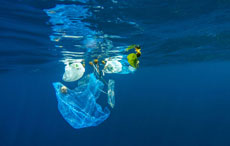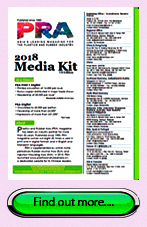PRA Chinese
Rubber Journal Asia Injection Moulding Asia Energy, Oil & Gas Asia
VISIT OUR OTHER SITES:
PRA Chinese
Rubber Journal Asia
Injection Moulding Asia
Energy, Oil & Gas Asia
EU outs new rules vs marine litter; moves to ban single use plastics

The Brussels-headquartered European Commission (EC) has proposed a new set of EU-wide rules, targeting the reduction of use, as well as adoption of waste management schemes for ten types of single-use plastic products and abandoned fishing gear, most often found on Europe's beaches and seas. These products are found to account for 70% of all marine litter items.
The EC’s Single Use Plastics Directive is an integral part of the Plastics Strategy, which underlines Europe’s progressing towards sustainable plastics industry; and a key component of the Circular Economy Action Plan.
The proposal zeroes in the root cause of the problem, which means looking at how these plastic items are produced, distributed and used by businesses and consumers; how they are disposed of, and how some of them end up on beaches, in seas and oceans.
Adoption of the proposal can pare down littering by more than half for the ten single use plastic items, preventing environmental damage estimated to cost EUR 223 billion by 2030; as well as curbing emission of 3.4 million tonnes of CO2 equivalent by 2030.
The intended measures to be implemented in view of the proposal, include: Plastic ban of certain products ,including plastic cotton buds, cutlery, plates, straws, drink stirrers and balloon sticks, which will all have to be made exclusively from more sustainable materials instead. Single-use drinks containers made with plastic will only be allowed on the market if their caps and lids remain attached; Reduced use of plastic food containers and drinking cups; Foisting producers to help cover the costs of waste management and clean-up, as well as awareness raising measures for food containers, packets and wrappers, drinks containers and cups, tobacco products with filters wet wipes, balloons, and lightweight plastic bags. Likewise, the industry will be given incentives to develop less polluting alternatives for these products; Imposing collection targets of single-use plastic drink bottles among member states. A collection target of 90% is set by 2025; Adoption of standardised labelling indicating waste disposal method, plastic content, and information on the negative environmental impact, for products such as sanitary towels, wet wipes and balloons; and, Adoption of awareness-raising measures regarding the environmental littering of single-use plastics and fishing gear, as well as about the available re-use systems and waste management options for all these products.
More than 80% of marine litter is plastics, according to the EC fact sheet released in 28 May. Waste plastics that accumulate in Europe’s and the world’s seas, oceans and beaches are ingested by marine species, such as sea turtles, seals, whales and birds. Plastic residues have also been found in fish and shellfish, and thus means they are also present in the human food chain.
(PRA)Subscribe to Get the Latest Updates from PRA Please click here
Copyright (c) 2018 www.plasticsandrubberasia.com. All rights reserved.






























































